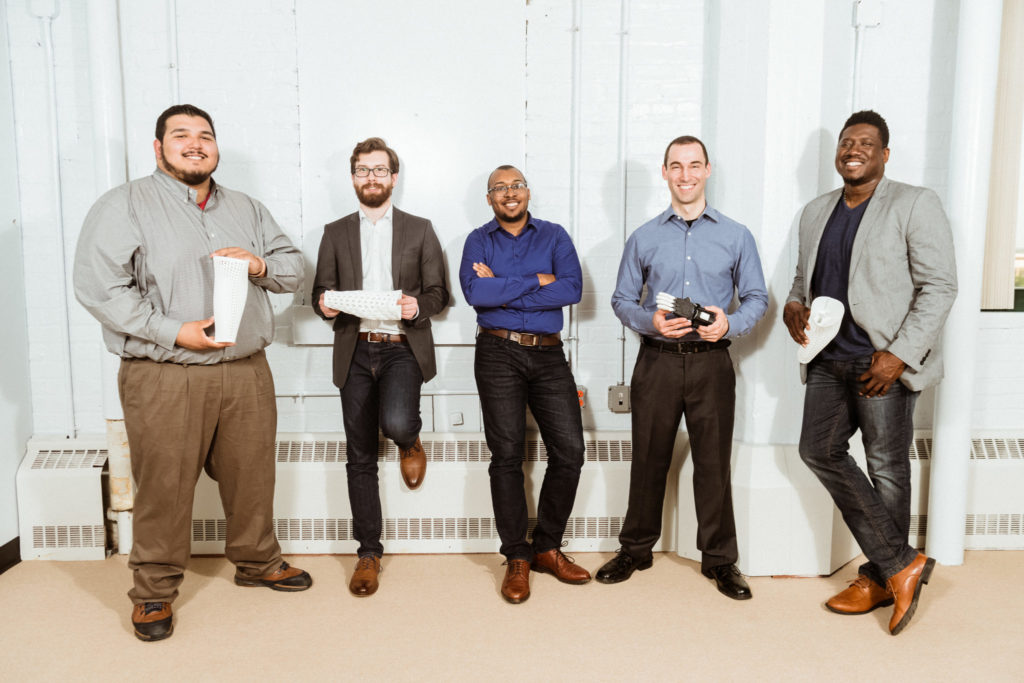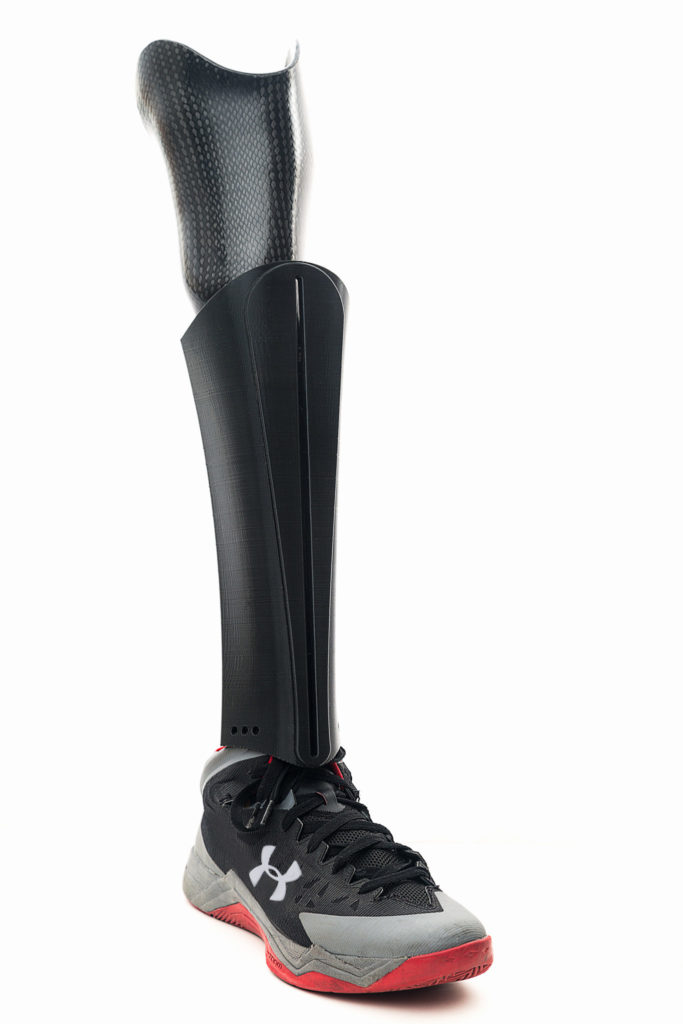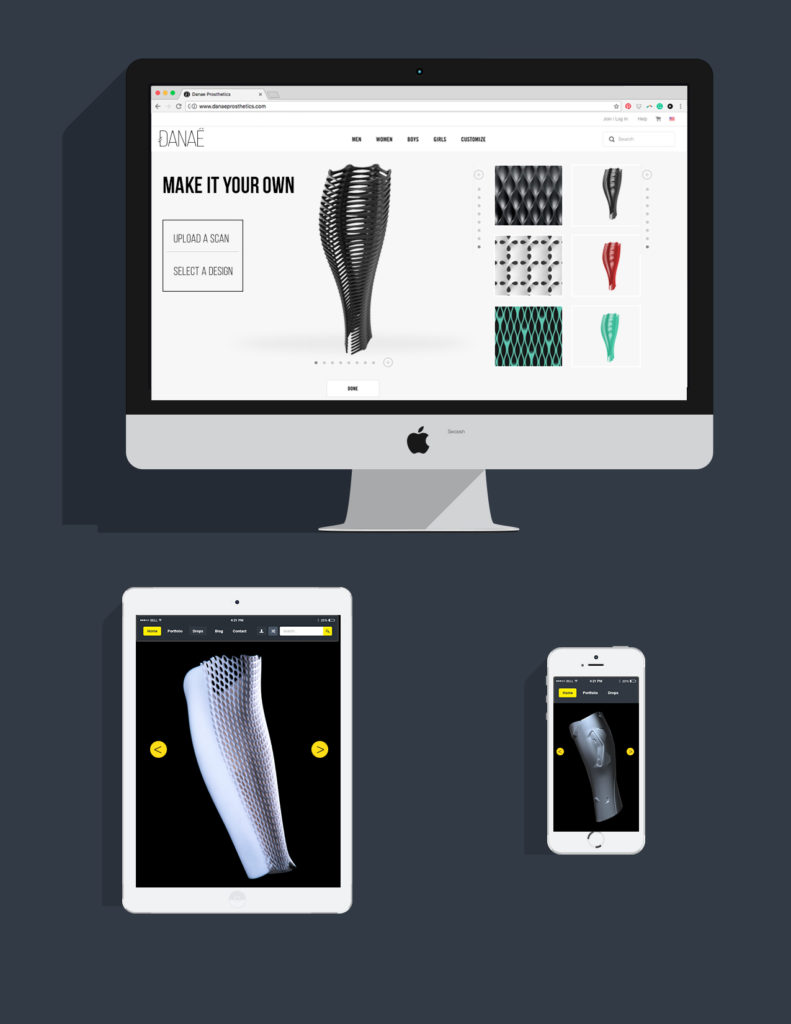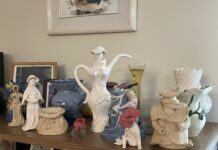
In 2015, Winston Frazer was traveling in São Tomé and Príncipe, a small island off the coast of Central Africa, as part of a program for students at the Maryland Institute College of Art (MICA), when he came across several amputees.
“They didn’t have prosthetics,” he recalls. “One man had one arm and no legs and crawled on the ground.” Struck by the man’s toughness, Frazer began to envision a way to help amputees everywhere deal with their loss.
A painting major, Frazer had plans of working in commercial art after graduation. But after his trip abroad, he quickly swapped classes in that discipline for design methodology. With the support of his family and professors, he began developing software to create prosthetic covers that allow a replacement leg to closely resemble the amputee’s original leg.
This year, Frazer’s business, Danae Prosthetics, will launch a one-of-a-kind app nearly four years in the making. The app enables anyone anywhere to engineer a personalized prosthetic cover from a 3-D scan of an amputee’s original limb. Covers can mimic the shape and look of the original limb. Or they can add some creativity to a prosthetic leg. “People can choose from different colors and/or design a fully 3-D dragon or different characters, for example,” Frazer explains.
Frazer sees Danae as “a design house for humanity,” but bringing it to the marketplace was another matter. Enter MICA’s nationally distinctive MICApreneurship program with its UP/Start incubator.
Founded in 2016, UP/Start focuses on supporting creative business ventures by MICA seniors, alumni one year following graduation and graduate students. The program provides game-changing capital and mentorship by industry partners to help move ideas into sustainability. Participants must create a company and pitch their idea at two stages of competition. In April 2016, weeks before Frazer’s graduation, he lost in the final round.
Undaunted, he pressed on. “I had no money and had sold my camera and everything that wasn’t nailed down to pour back into Danae,” he says. “I got a job at a property management corporation, quit, ran out of money, drove for Uber and worked at Amazon from 5:30 p.m. until 6 a.m. before getting up at 9 a.m. to take meetings for Danae.”
 Stephanie Chin, who oversees the UP/Start program, first encountered Frazer’s perseverance when he sat on a panel while she was interviewing for MICA’s position of assistant director of entrepreneurship. “I remember thinking that here was someone really driven by a passion not solely for monetary gain,” she recalls. “After I joined MICA, he didn’t show much of an interest in reapplying for the 2017 UP/Start. I was shocked to see him at an informational event and even more shocked to get his application. It really showed me that he had the tenacity every entrepreneur needs.”
Stephanie Chin, who oversees the UP/Start program, first encountered Frazer’s perseverance when he sat on a panel while she was interviewing for MICA’s position of assistant director of entrepreneurship. “I remember thinking that here was someone really driven by a passion not solely for monetary gain,” she recalls. “After I joined MICA, he didn’t show much of an interest in reapplying for the 2017 UP/Start. I was shocked to see him at an informational event and even more shocked to get his application. It really showed me that he had the tenacity every entrepreneur needs.”
The second time was the charm. At the 2017 UP/Start competition, MICA, with funding by the Philip E. and Carole R. Ratcliffe Foundation, awarded more than $100,000 to five winners from among eight finalists. Frazer won $20,000 plus $5,000 for the People’s Choice Award, for which the audience votes in real time during the event. A month later, he quit his side gigs.
He also gained two mentors: investor Monyka Berrocosa, who ran the 2016 UP/Start competition; and 2017 UP/Start judge Ken Malone, an entrepreneur, investor and principal of Early Charm Ventures, LLC.
“Winston has an internal drive to do big things and a deep passion for helping others. It’s the perfect combination of traits for starting a company like Danae,” Malone explains. “There’s a large trend across industries to move from mass to customized production that has been enabled by advances in manufacturing technologies. Danae is a natural extension of this trend.”
Early on, Frazer had turned to MICA friends and fellow artists Austin Peppel, MICA ’15, who serves as the company’s manufacturing director, and Andrew George Copeland, MICA ’13, who handles marketing. The team recently made the move from Frazer’s apartment to digs at Baltimore’s high-tech Harbor Design and Manufacturing, and after several fits and starts with 3-D printing the prosthetic covers in-house, Danae Prosthetics now partners with Xometry in Gaithersburg to manufacture the designs.
“The Baltimore business community has really gotten behind us,” Frazer notes proudly. Last May, Jeff Cherry’s Conscious Venture Lab selected Danae Prosthetics to participate in a four-month incubator for new ventures. Technical.ly ranked the company tops on its January 2018 list of the 20 best startups in Baltimore, the same month that the 20-something entrepreneurs traveled to Dubai for Arab Health 2018, the second-largest medical conference in the world, on a grant from the Maryland Department of Commerce.
The response from the amputees has been equally positive. “We need to make sure that we are producing what the community wants,” Copeland says. “It takes time for your leg to adjust to a prosthetic. We’re trying to help people reinvent their new normal and live it as they see fit.”
 An amputee whom Copeland met while shopping told him that if Danae created something that would make him want to wear his prosthetic, he would. “We’re not the first company to make covers, but we are the first to automate the process so anyone can create an original design at home,” Copeland says. “Innovation is using what you have to create something you haven’t thought of. We’re combining art, health, engineering and technology to enrich a community.”
An amputee whom Copeland met while shopping told him that if Danae created something that would make him want to wear his prosthetic, he would. “We’re not the first company to make covers, but we are the first to automate the process so anyone can create an original design at home,” Copeland says. “Innovation is using what you have to create something you haven’t thought of. We’re combining art, health, engineering and technology to enrich a community.”
Through it all, there’s the constant rinse-and-repeat cycle of idea-code-prototype-test, a process that’s hardly new to Peppel. But creating a software-based product with a manufacturing and distribution structure that relies on cloud-based parametric modeling and 3-D printing for production parts is new. “I’ve enjoyed creating a product line that can continuously be improved after release, since all it needs is a software update,” Peppel says. “It’s cool to see it start to come to fruition, though there’s always plenty to be done.”
As far as the company’s name, pick your metaphor. Taningia danae, a giant squid who lives deep in the ocean, has features unlike any other animal: light-producing, lemon-yellow photophores on the ends of two tentacles. Frazer favors the image of an eight-tentacled, singular species to express his love of creative collaboration, but Danae is also the name of Perseus’ mother; Perseus is, of course, the super- strong demigod who, fittingly, uses magical items given to him by the gods. Both interpretations capture the company’s mission to help people showcase their uniqueness and mettle.





Hello Winston, your cousin from South Carolina is very proud of you! Your love and passion for your work is paying off for many people. May God bless you!